-----------------------------------------------
Mod ID 90111: https://mods.paradoxplaza.com/mods/90111/Any
Feedback is appreciated. Thank you for viewing!
Please see the forum link for a longer description.
----------------------------------------------
Hope you enjoy checking out this build!
Overcharged Egg made suggestions when he reviewed the city in mid-May (Late game no mods Cities 2 can be beautiful! ), and the 1.3.3f1 patch deprecated the previous version, so we’re due for a bit of an update.
I let the simulation run for a couple years and rebalanced zoned uses as needed. Also, I’ve made a couple additional significant changes. First, OE suggested I develop the headlands at the end of the Infinity Gardens city center. So I opened up a few tiles and added the Observation Tower (named OE Infinity Tower).
Also, I revamped the skyline next to the industrial port in Shale City. As gorgeous as the skyline looked (IMO) it wasn’t really consistent with the story I was telling. So I redeveloped all the high density offices using the New England office zones, then mixed in some China and regular high density office towers to give it some diversity and reflect the age of this downtown (of course, some buildings will be redeveloped over time).
Lastly, with the Bridges and Piers patch, I added the double-stack railroad/highway bridge in place of the suspension bridge previously leading to the airport.
I started this build in January 2024 before the Economy 2.0 update, and adopted a "standard" historical development model (social studies teacher). My initial focus was on creating rural communities--progressing from utopian agricultural societies to resource extraction towns and, finally, to dense, transit-centered urban areas rooted in service and information economies. The model is imperfect due to the pre-existing highway system in-game, so I used a dystopian future lore as a guiding framework.
Each community within this build has a unique history and personality, and in order to show a continuous history of the build from its beginning, I’ve rarely called “mulligans”. One example of how I've built within what is already present is Platte Flats, where leaders strategically densified around transit stops to address homelessness in the community, while preserving the town’s organic farming roots. (Note-the edge of Platte Flats adjoining the county seat has begun to increase in density, but the other end of the city retains its historical identity). Another can be seen in the very recent new development in Strayfield Greens where the Emerson Institute has taken the lead in stewarding sensible new residential development that honors the community's history by adhering to existing norms around the college.
Recently, I opened up about 30 new tiles in the river valley adjacent to Proudhon and Franklin. The upkeep costs are accounted for in the city budget. I’m calling this part of the map “Kleine Zurich”, but am probably not going to build anything anytime soon because I am creating a 1:1 map of Zurich and want to build a more-or-less authentic city on that new map using many of the new DLC assets. My thinking is that mimicking a European style city layout will prepare me to build a “Kleine Zurich” on this map. So anyone who wanted to mess around in this build could easily play in those tiles with minimal impact on the rest of the build. The treasury exceeds 600mil at this point.
Presently, the city population is just shy of 200k, unemployment is below 3% and the number of unhoused cims is near zero. The crime probability rate is at 2%, total number of criminals is 43, and crime success rate is 0%. Traffic flow is somewhere between 75%-80%. Fire probability is 19% and overall health is at 67%. All service provisions are in the green (electricity, water, waste management, education, etc.) and mass transit ridership ranges between 125k-135k/month.
The budget is balanced and produces positive cash flow, and the total treasury is nearing ₡790M. All domestic economy production categories are now green (exporting). Demand bars are all maxed out as well. So this leads me to my one conundrum, which is commercial profitability (or profitability across the board). I have commercial, office and industrial tax rates set well below 10%, and with the domestic economy producing all needed goods, I would think that I’ve minimized transportation costs as well as possible. So I just don’t understand why I can’t get profitability about 50% for any sector in the economy.
Overall, however, I’m really proud of this build.
This build is no longer exclusively a vanilla build, as I briefly installed Better Bulldozer and Anarchy in order to rework the Central Intelligence Agency asset. The parking lots around that structure were just gross, and I really wanted it to have a smaller footprint in that section of the build. That is the only “cheat” at present, and those mods are now unsubbed in this build. I also briefly installed the water features mod to reclaim the ore mine outside Cobalt and restore it as a lake and green space. The only mods being consistently used in this build are InfoLoom and Extended Tooltip.
Also, since all of the region packs have finally been released, I’ve redeveloped several parts of the build to make them more authentic.
Note -- With the exception of my use of the 529 tiles mod to relock tiles post-Economy 2.0, and the homelessness mod to address the recurring bug, this build is 100% vanilla (now plus DLCs). As previously mentioned, I added Better Bulldozer and Anarchy to the mod list for about an hour to edit the central intelligence asset, but those mods have subsequently been removed.
Features in this build to look for:
Hope you enjoy checking out this build!
My one criticism of the game is as follows: The base game simply does not offer the essential information needed to achieve the aforementioned balance across educational demands from the housing market in connection with specific housing needs. This build would not be possible without the use of InfoLoom (by Bruceyboy24804) in order to access more precise data about the population education levels, unhoused workers at each education level and the educational needs of the labor markets. The # of unhoused households as shown in the Residential Data screen in InfoLoom is especially helpful because it shows that particular data point with reference to what would be a moving “neutral” value relative to the total population.
Mod ID 90111: https://mods.paradoxplaza.com/mods/90111/Any
Feedback is appreciated. Thank you for viewing!
Please see the forum link for a longer description.
----------------------------------------------
Hope you enjoy checking out this build!
Overcharged Egg made suggestions when he reviewed the city in mid-May (Late game no mods Cities 2 can be beautiful! ), and the 1.3.3f1 patch deprecated the previous version, so we’re due for a bit of an update.
I let the simulation run for a couple years and rebalanced zoned uses as needed. Also, I’ve made a couple additional significant changes. First, OE suggested I develop the headlands at the end of the Infinity Gardens city center. So I opened up a few tiles and added the Observation Tower (named OE Infinity Tower).
Also, I revamped the skyline next to the industrial port in Shale City. As gorgeous as the skyline looked (IMO) it wasn’t really consistent with the story I was telling. So I redeveloped all the high density offices using the New England office zones, then mixed in some China and regular high density office towers to give it some diversity and reflect the age of this downtown (of course, some buildings will be redeveloped over time).
Lastly, with the Bridges and Piers patch, I added the double-stack railroad/highway bridge in place of the suspension bridge previously leading to the airport.
I started this build in January 2024 before the Economy 2.0 update, and adopted a "standard" historical development model (social studies teacher). My initial focus was on creating rural communities--progressing from utopian agricultural societies to resource extraction towns and, finally, to dense, transit-centered urban areas rooted in service and information economies. The model is imperfect due to the pre-existing highway system in-game, so I used a dystopian future lore as a guiding framework.
Each community within this build has a unique history and personality, and in order to show a continuous history of the build from its beginning, I’ve rarely called “mulligans”. One example of how I've built within what is already present is Platte Flats, where leaders strategically densified around transit stops to address homelessness in the community, while preserving the town’s organic farming roots. (Note-the edge of Platte Flats adjoining the county seat has begun to increase in density, but the other end of the city retains its historical identity). Another can be seen in the very recent new development in Strayfield Greens where the Emerson Institute has taken the lead in stewarding sensible new residential development that honors the community's history by adhering to existing norms around the college.
Recently, I opened up about 30 new tiles in the river valley adjacent to Proudhon and Franklin. The upkeep costs are accounted for in the city budget. I’m calling this part of the map “Kleine Zurich”, but am probably not going to build anything anytime soon because I am creating a 1:1 map of Zurich and want to build a more-or-less authentic city on that new map using many of the new DLC assets. My thinking is that mimicking a European style city layout will prepare me to build a “Kleine Zurich” on this map. So anyone who wanted to mess around in this build could easily play in those tiles with minimal impact on the rest of the build. The treasury exceeds 600mil at this point.
Presently, the city population is just shy of 200k, unemployment is below 3% and the number of unhoused cims is near zero. The crime probability rate is at 2%, total number of criminals is 43, and crime success rate is 0%. Traffic flow is somewhere between 75%-80%. Fire probability is 19% and overall health is at 67%. All service provisions are in the green (electricity, water, waste management, education, etc.) and mass transit ridership ranges between 125k-135k/month.
The budget is balanced and produces positive cash flow, and the total treasury is nearing ₡790M. All domestic economy production categories are now green (exporting). Demand bars are all maxed out as well. So this leads me to my one conundrum, which is commercial profitability (or profitability across the board). I have commercial, office and industrial tax rates set well below 10%, and with the domestic economy producing all needed goods, I would think that I’ve minimized transportation costs as well as possible. So I just don’t understand why I can’t get profitability about 50% for any sector in the economy.
Overall, however, I’m really proud of this build.
This build is no longer exclusively a vanilla build, as I briefly installed Better Bulldozer and Anarchy in order to rework the Central Intelligence Agency asset. The parking lots around that structure were just gross, and I really wanted it to have a smaller footprint in that section of the build. That is the only “cheat” at present, and those mods are now unsubbed in this build. I also briefly installed the water features mod to reclaim the ore mine outside Cobalt and restore it as a lake and green space. The only mods being consistently used in this build are InfoLoom and Extended Tooltip.
Also, since all of the region packs have finally been released, I’ve redeveloped several parts of the build to make them more authentic.
Note -- With the exception of my use of the 529 tiles mod to relock tiles post-Economy 2.0, and the homelessness mod to address the recurring bug, this build is 100% vanilla (now plus DLCs). As previously mentioned, I added Better Bulldozer and Anarchy to the mod list for about an hour to edit the central intelligence asset, but those mods have subsequently been removed.
Features in this build to look for:
- Note the use of different vanilla themes, mixtures of themes, or design styles to create the respective personalities of each community. The base game is not as boring and repetitive as some make it out to seem!
- I’m really proud of the transit numbers in this build. 200K+ in a city with 180K+ cims is decent, I think. Beyond that, all of the metrics of this build (with the exception of abysmal commercial profitability) are respectable.
- The “Lil Dig” highway which travels under Sterling, the county seat.
- Yumbl Parkway/Highway (near Infinity Gardens), which incorporates adapted diverging diamonds from his video, “Divine or Diabolical?”.
- City Planner Boulevard, a long couplet tying the tram-focused Infinity Gardens together.
- Signature bridge connecting to airport island.
- Øresund-style underground service tunnel connecting tram networks across Sashaway Bay.
- Transition in Strayfield Greens from more organic subsistence farming layouts to more Jeffersonian-Grid–style of layouts (more or less) used in industrial farming.
- There is a cool little turnaround for trams in Platte Flats.
- In Franklin, I swapped out most of the North American zoning for UK. In the dense urban cores, I randomly swapped in CN high density office zoning as well as EE and UK high density housing in order to create more variety in the cityscapes.
- Transition neighborhoods between Platte Flattes and Sterling which align and fit together oblique streets like a jigsaw puzzle.
- Also in Sterling, adjacent the university complex, courtyard block interiors with services and amenities integrated within a super block grid.
- Unincorporated county farmland along the outer coast. My goal was to create as realistic a presentation as possible, using every vanilla tool I could think of–from plopping thousands of trees individually, to creating forestry as orchards, to leaving fields totally empty (i.e. green, instead of brown), etc.
- Garden Springs, along the highway just inland from Shale City (cargo harbor). Really happy with how this small community turned out.
Hope you enjoy checking out this build!
My one criticism of the game is as follows: The base game simply does not offer the essential information needed to achieve the aforementioned balance across educational demands from the housing market in connection with specific housing needs. This build would not be possible without the use of InfoLoom (by Bruceyboy24804) in order to access more precise data about the population education levels, unhoused workers at each education level and the educational needs of the labor markets. The # of unhoused households as shown in the Residential Data screen in InfoLoom is especially helpful because it shows that particular data point with reference to what would be a moving “neutral” value relative to the total population.
Attachments
-
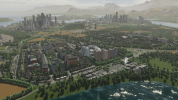 postcard5.png3,9 MB · Views: 0
postcard5.png3,9 MB · Views: 0 -
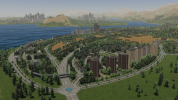 postcard6.png3,7 MB · Views: 0
postcard6.png3,7 MB · Views: 0 -
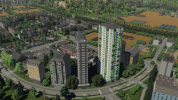 postcard8a.png4,2 MB · Views: 0
postcard8a.png4,2 MB · Views: 0 -
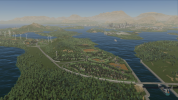 postcard9.png3,5 MB · Views: 0
postcard9.png3,5 MB · Views: 0 -
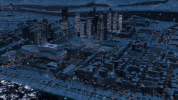 postcard11.png4 MB · Views: 0
postcard11.png4 MB · Views: 0 -
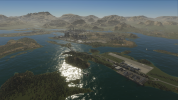 postcard13.png3,2 MB · Views: 0
postcard13.png3,2 MB · Views: 0 -
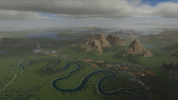 postcard14.png3,1 MB · Views: 0
postcard14.png3,1 MB · Views: 0 -
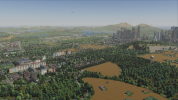 15-March-15-50-39-02.png3,5 MB · Views: 0
15-March-15-50-39-02.png3,5 MB · Views: 0 -
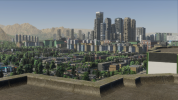 15-March-15-59-59-07.png3,4 MB · Views: 0
15-March-15-59-59-07.png3,4 MB · Views: 0 -
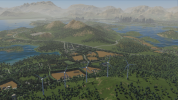 15-March-16-01-06-08.png3,7 MB · Views: 0
15-March-16-01-06-08.png3,7 MB · Views: 0 -
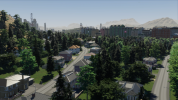 15-March-16-05-49-13.png3,4 MB · Views: 0
15-March-16-05-49-13.png3,4 MB · Views: 0 -
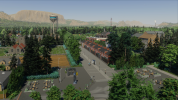 0714cpng.png.png3,7 MB · Views: 0
0714cpng.png.png3,7 MB · Views: 0 -
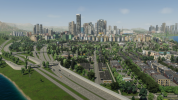 0714dpng.png.png3,7 MB · Views: 0
0714dpng.png.png3,7 MB · Views: 0 -
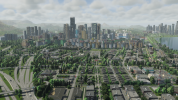 0714epng.png.png4 MB · Views: 0
0714epng.png.png4 MB · Views: 0 -
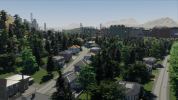 0714fpng.png.png3,4 MB · Views: 0
0714fpng.png.png3,4 MB · Views: 0 -
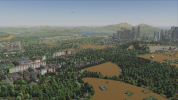 0714gpng.png.png3,5 MB · Views: 0
0714gpng.png.png3,5 MB · Views: 0 -
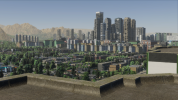 0714hpng.png.png3,4 MB · Views: 0
0714hpng.png.png3,4 MB · Views: 0 -
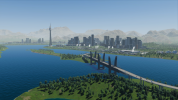 0714kpng.png.png11,1 MB · Views: 0
0714kpng.png.png11,1 MB · Views: 0 -
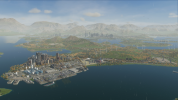 0714mpng.png.png3,2 MB · Views: 0
0714mpng.png.png3,2 MB · Views: 0 -
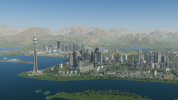 0714npng.png.png3,1 MB · Views: 0
0714npng.png.png3,1 MB · Views: 0 -
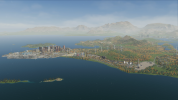 0714opng.png.png2,9 MB · Views: 0
0714opng.png.png2,9 MB · Views: 0
Last edited:

